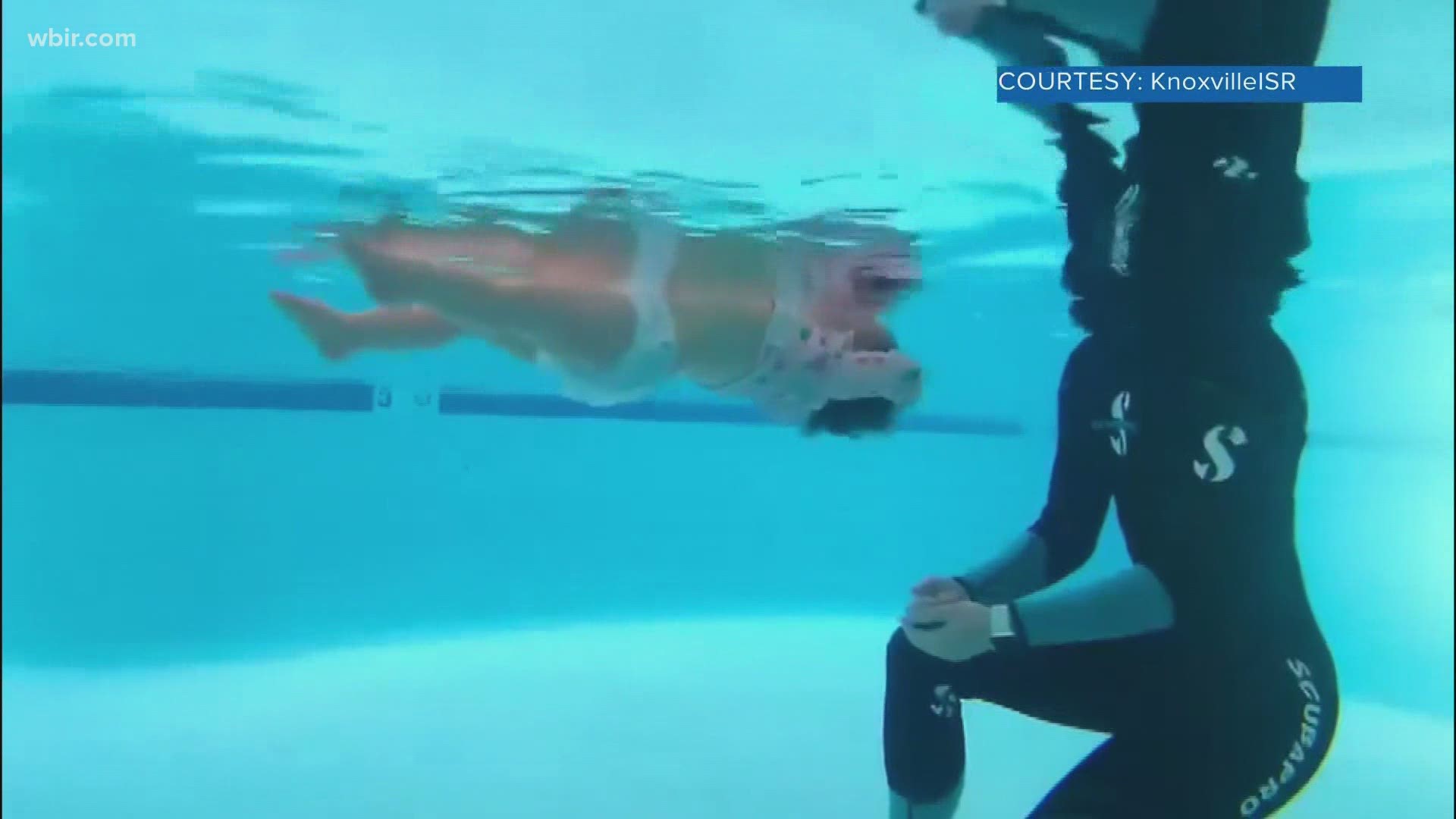KNOXVILLE, Tenn. — As summer approaches, water safety is at the top of most parents' and swim instructors' minds.
The CDC said that around 10 people die every day from unintentional drowning. Of those, two are children younger than 14. Children between 1-year-old and 4-years-old have the highest drowning rates.
There are also ways for your children to save their own lives in water. Swim instructors encourage swim lessons early in life to prepare kids to stay safe in the water.
Alanna Bernstein, the owner of Alanna's Aquatics, dedicates her days to teaching kids how to be comfortable in the water.
"In all of my lessons, I cover life-saving skills like water boundaries, pool safety, independence, swim skills, swimming, floating — anything, you name it," Bernstein said.
She said that showing kids how to swim and float can save their lives. It's important to get children comfortable with the water, since drowning is the leading cause of death in young children, according to Bernstein.
In a recent case, the Cumberland County Sheriff's Office said a 1-year-old boy fell into a pond and almost drowned on Saturday night.
Deputies said the boy was missing for 3-5 minutes before his family found him unconscious in the pond. His father and first responders started doing CPR and got a pulse back, but he was still in the hospital as of Monday night.
While details about that case are still unavailable, Alanna said in general — it's important for parents to be proactive.
"Water safety starts with you as parents. You need to be educated before doing your research, take a CPR class, enroll in swim lessons — it's very important. No matter where we are, we're surrounded by water and children are very, very curious creatures," Bernstein said.
She encourages families to start lessons with their children as early as they can. She teaches traditionally, but there's also the ISR technique that trains babies to flip on their backs to prevent drowning.
Knoxville ISR teaches infants how to react if they come in contact with water, encouraging lifesaving techniques.
"I'm all a fan for surviving in the water, so any method is acceptable," Bernstein said.
The CDC says if you are headed to a river or lake, life jackets are proven lifesavers and seconds count for victims. The faster rescuers start administering CPR on someone who is not breathing, their chances of survival go way up.

